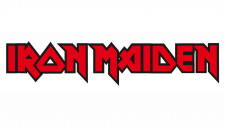Wu Tang Clan Logo
Wu-Tang Clan, an iconic American hip-hop group, is involved in music production, entertainment, and merchandising. They have a significant presence in the global music industry and various entertainment ventures. Ownership of the Wu-Tang Clan brand is collectively shared among its members. Their influence extends worldwide, and their music remains a key part of hip-hop culture.
Meaning and history
Wu-Tang Clan, a legendary hip-hop group, was formed in New York City in the early 1990s. It was founded by RZA (Robert Diggs) and included members like Method Man, Ghostface Killah, Raekwon, and others. Their debut album, “Enter the Wu-Tang (36 Chambers),” released in 1993, is considered one of the greatest hip-hop albums of all time.
One of the unique aspects of Wu-Tang Clan was their innovative approach to ownership. RZA came up with the idea of selling albums like art pieces, and they decided to produce only one copy of their album “Once Upon a Time in Shaolin,” which was sold at auction for millions.
Over the years, individual members pursued solo careers, contributing to the group’s legacy. They also expanded their influence into various business ventures, including clothing, movies, and television.
Wu-Tang Clan’s influence on hip-hop and pop culture remains significant, and they continue to tour and release music, maintaining their status as one of the most iconic and influential groups in the music industry.
1993 – Today
The iconic “W” emblem, which later became the symbol of the Wu-Tang Clan, originated as a sticker. Its shape resembles the silhouette of Batman’s wings, characterized by wide, wing-like edges. Band members, such as Gary Grice (GZA) and Clifford Smith (Method Man), personalized the “W” by transforming it into “G” and “M” respectively. This customization was used for their solo performances, emphasizing their connection to the Wu-Tang Clan. Additionally, the “W” served as a symbol for the rapper’s Wu Wear clothing line.
The group’s logo is often seen as an homage to Eastern culture, given that the word “WU-TANG” is written in a Chinese calligraphic style, forming a horizontal stripe across the letter “W.” This connection to Eastern culture is no coincidence, as the group derived its name from the Hong Kong film “Shaolin and Wu-Tang,” centered around the martial art of kung fu. In this context, action heroes wielding swords were likened to rappers, whose weapon is language and lyrics. The term “lyrical assassins” was used by U-God to describe the Wu-Tang Clan’s members.
Many of the band’s members were influenced by Eastern philosophy, particularly the popularity of kung fu films in the 1970s among African Americans. These films often portrayed Asians as symbols of strength and resilience. For RZA, the Shaolin temple held particular significance, drawing parallels between the group’s journey from the slums to global recognition and the journey of a Shaolin monk spreading martial arts. Hence, the logo’s resemblance to an icon from a kung fu comic book is not surprising.
Initially, the emblem was intended to feature a hand holding a severed head, designed for the single “Protect ya Neck.” However, RZA and Mathematics deemed this imagery too graphic and opted for the simple “W,” which later became the enduring logo.
The interpretation of the logo varies, with some seeing a stylized CD, while others perceive it as a bird with expansive wings or akin to Batman’s emblem. RZA offered his perspective, likening the “W” to the peaks of the Wudang mountain range, home to Taoist temples and monasteries. He recalled seeing a giant W-shaped sign during a visit to Shaolin and his ascent up the winding roads to Mount Wudang. This connection, though realized after the logo’s creation, held profound symbolic meaning for RZA and the Wu-Tang Clan.
The predominant color of the logo is yellow, but it’s versatile enough to work effectively in black and white, making it suitable for placement on a wide range of backgrounds, whether light, dark, or colorful.










